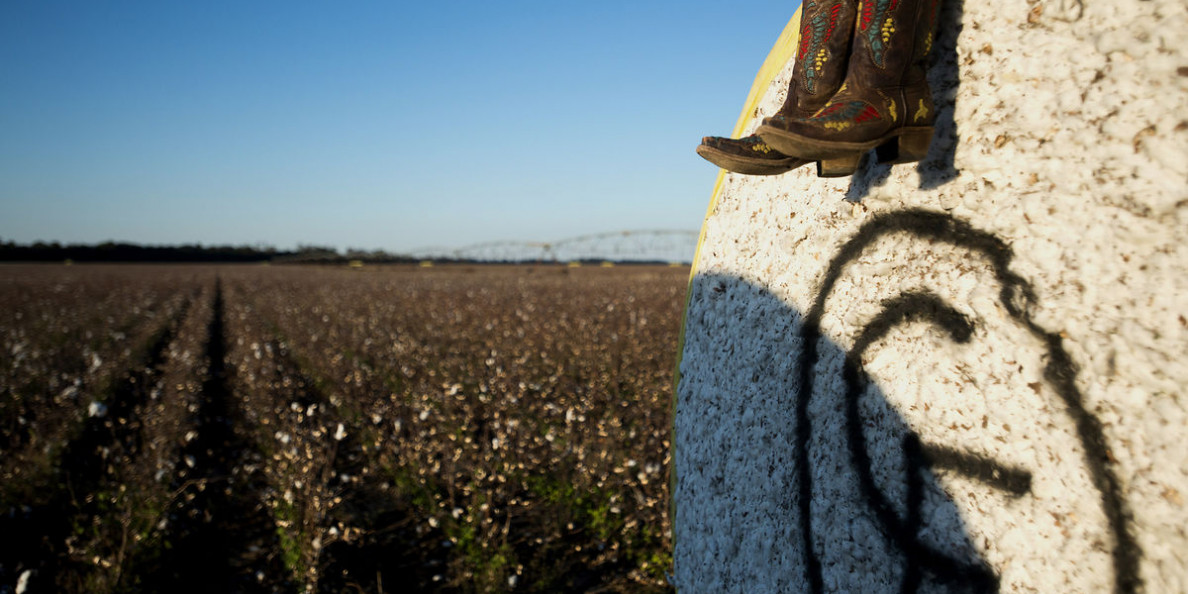This has been an extremely difficult year for the U.S. cotton industry. COVID-19 has had far reaching impacts on agricultural trade, manufacturing, consumer demand and prices. The COVID-19 containment measures that halted a large portion of the global economy have deeply impacted the U.S. and world cotton industries.
The COVID-19 pandemic resulted in a slowdown in the world economy and a disruption in world cotton demand. U.S. cotton producers, along with the industry’s other six segments, operate in highly integrated and competitive global fiber and textile/apparel markets. Approximately 75% of U.S. cotton production is exported as raw cotton fiber and another 20-25% exported as yarn, thread or fabric. Factors in the global fiber market heavily influence the U.S. cotton industry’s economic situation.
World consumption dropped to 102 million bales during the 2019 crop year due in large part to the forced closure of manufacturing facilities in many countries. This represents an 18 million bale decline compared to the 2018 crop year and is 24 million bales lower than initial expectations for the 2019 crop.
While a recovery in mill use is expected for the 2020 crop year, the ongoing COVID disruptions continue to impact the pace of economic recovery. USDA is currently projecting a recovery in world mill use to 114 million bales for the 2020 crop year, which is a fairly optimistic projection. While the U.S. and world economies are slowly recovering, the pace of economic recovery is highly dependent on containment of the COVID-19 outbreak and the return to more normal social habits by consumers.
World production for 2020 is projected to be almost 116 million bales – 6 million bales less than in 2019 – with the largest reductions in the United States, Brazil, and Pakistan. U.S. planted acreage declined by almost 12% in 2020. In the Southwest, severe drought conditions throughout the growing season resulted in many abandoned acres. In South Texas and in the Southeast, hurricanes also reduced the 2020 cotton crop. Untimely rainfall at harvest led to yield and quality losses in the Southeast and in the Mid-South.
In November, USDA estimated a U.S. crop of 17.1 million bales – almost 3 million bales lower than in 2019. With projected exports of 14.6 million bales and mill use of 2.5 million bales for 2020, this results in U.S. ending stocks of 7.2 million bales.
World stocks are projected to reach 101.4 million bales at the end of the 2020 crop year, with a record level of stocks outside of China. Despite the bearish statistical outlook, futures prices have been trending upward for the past few months. The weaker U.S. dollar, some weather concerns, the Phase 1 trade deal, stronger competing crop prices, speculative trading and a slightly better recovery than expected seem to have combined to support futures prices.
As we look ahead, current 2021 futures prices suggest that cotton still may be a better alternative than some other commodities. The duration of the COVID-19 disruptions remains a key uncertainty for 2021. The pace of economic recovery is highly dependent on any additional COVID-19 outbreaks and restrictions. Large stocks could put downward pressure on prices during the 2021 crop year. Lower polyester prices – down 12% from a year ago and 35% from the end of 2018 (and the lowest level since the 2008 marketing year) – create even more challenges in the world fiber market.


